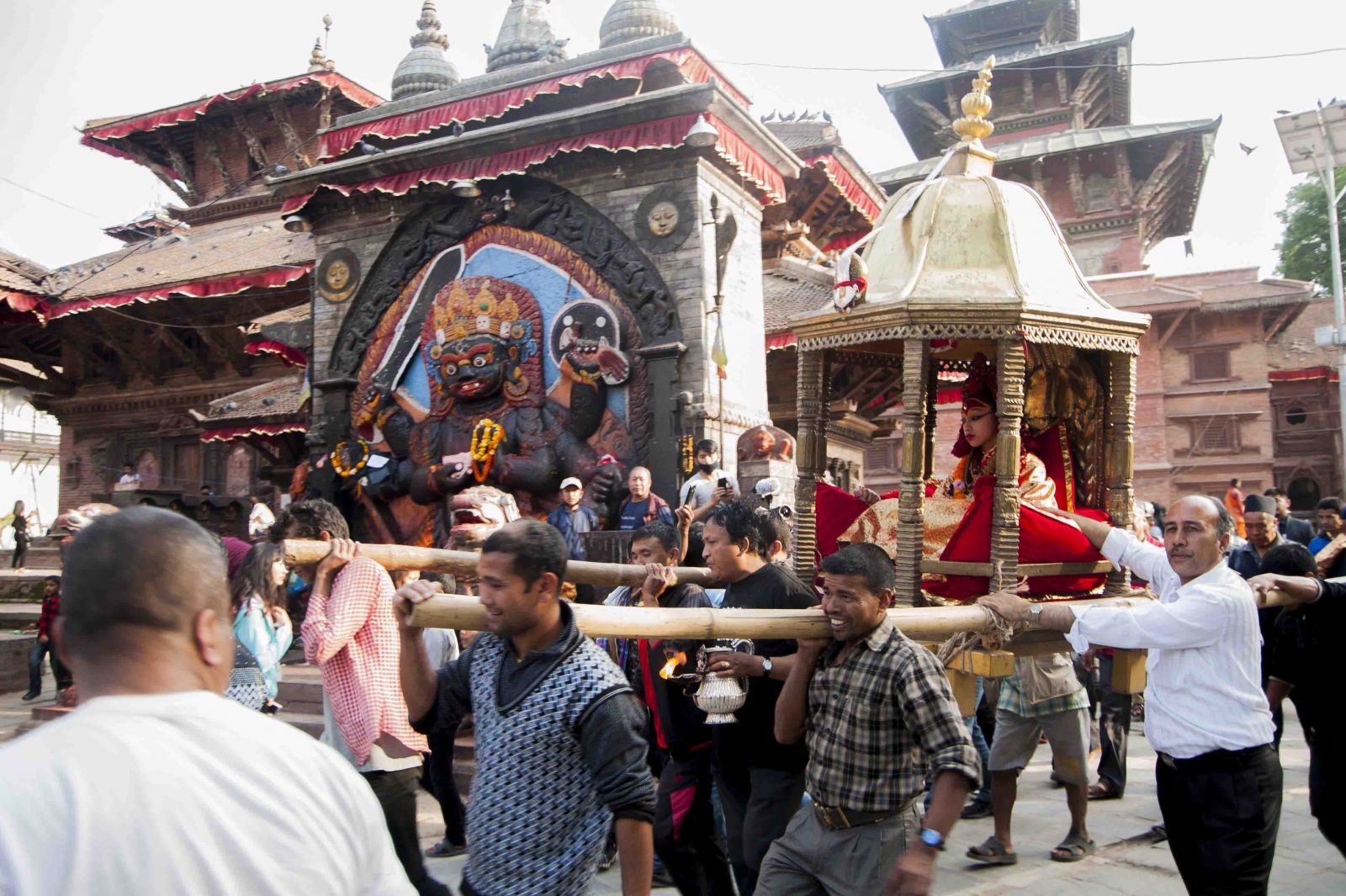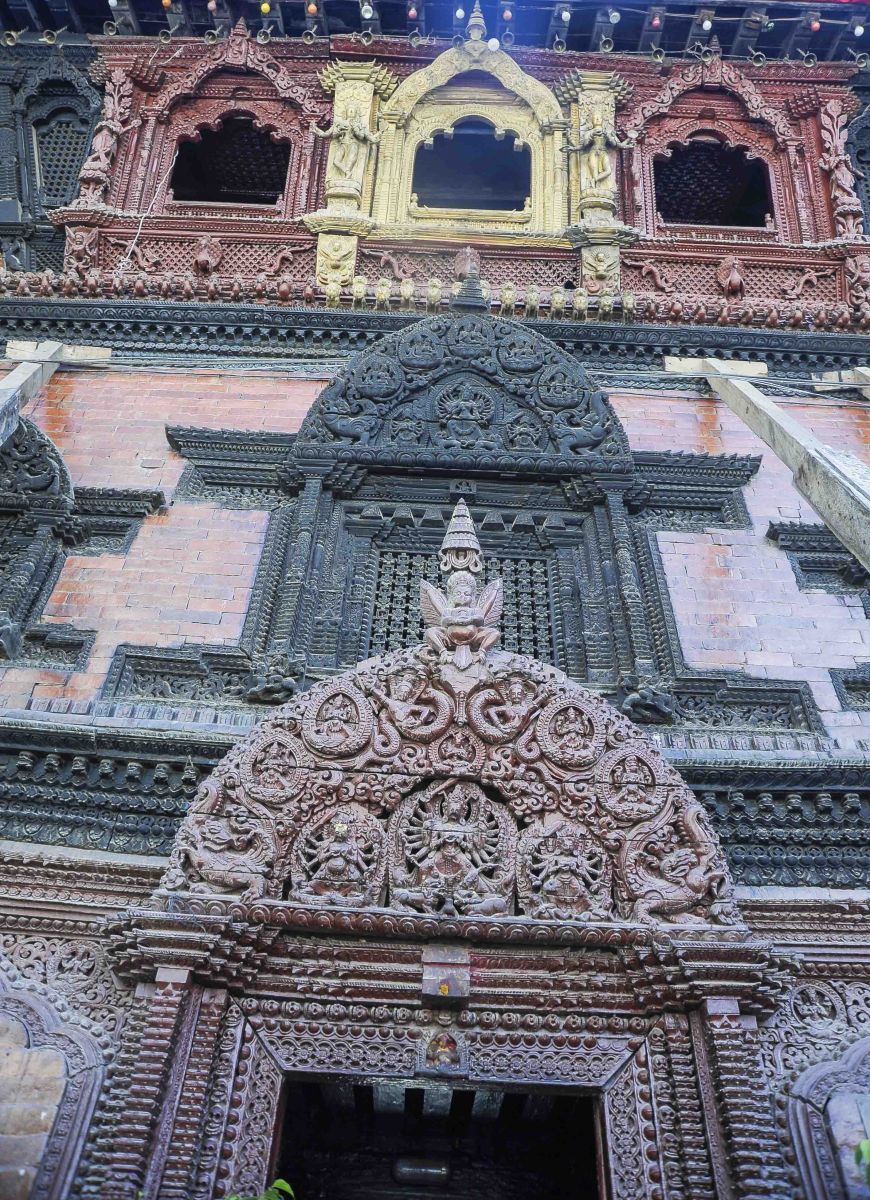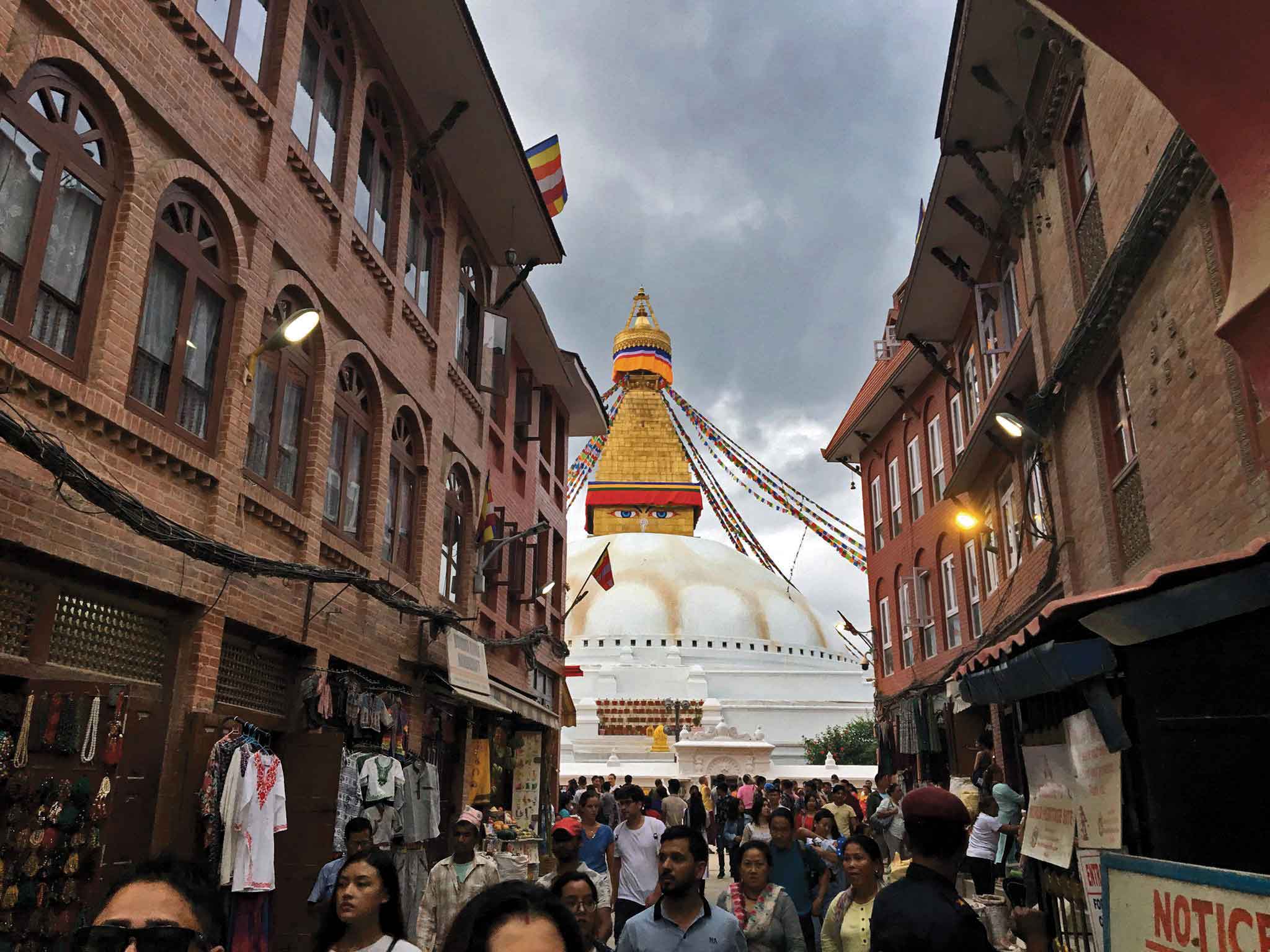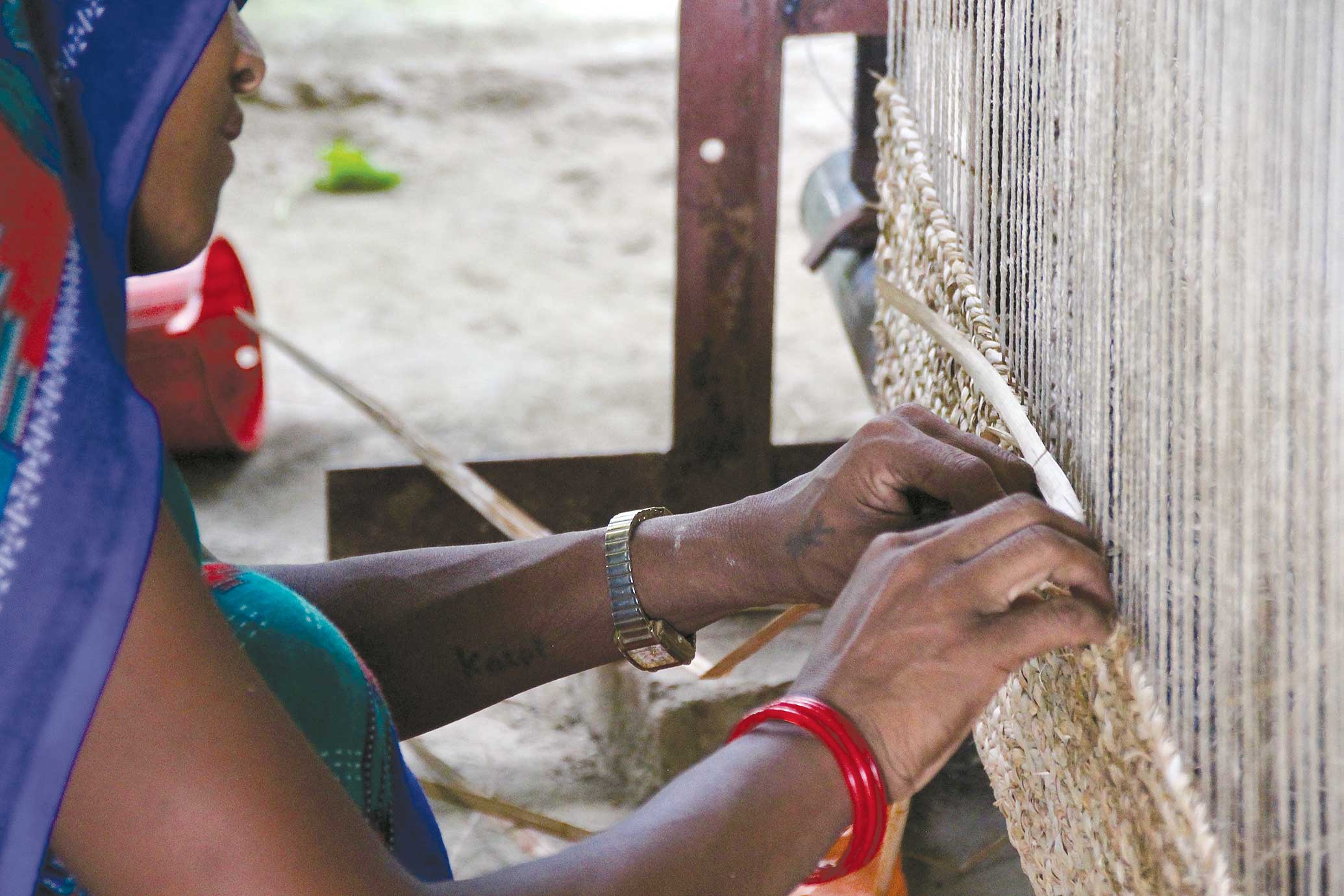Behind the Scenes: The Person who knows all the Secrets of Kumari
One of the unique aspects of Newari culture, Kumari grants her compassion and blessings to all who come to her.
Nowhere else in the whole wide world will you find a living goddess, except in the Kathmandu Valley, where she is known as Kumari, and commands great respect and devotion from one and all.
In an inconspicuous space on the ground floor, outside the Kumari Ghar, there is a middle-aged male shopkeeper selling beverages and snacks to Basantapur visitors. Wearing a blue-striped polo shirt and shorts, it is hard to associate him with his position as the caretaker of Kumari, the living goddess of Nepal.
Gautam Shakya, the eleventh generation of Kumari caretakers, has looked after six Kumaris so far. I met him in the courtyard of Kumari Ghar, when the historical building, which survived the April 2015 earthquakes, was being prepared and decorated for this year’s Intra Jatra, one of the biggest festivals here.
The tradition of selecting and worshipping Kumari dates back to around 260 years ago. Possessed of all the thirty-two characteristics of untarnished beauty, including luminous dark eyes and lustrous black hair, the Kumari is carefully selected from among young pre-puberty girls of the Shakya clan. She is regarded as the incarnation of Taleju, a titular deity of Hindu culture.
As the protecting deity of the valley, Kumari is considered to be the purest of all girls, and a significant symbol of a culture that combines aspects of both Buddhism and Hinduism. Every day, there are on average, one hundred and more people coming to visit her. “She is totally pure; not even an injection or vaccination on her skin is allowed,” said Additional Inspector General of Police (AIG) Bijaya Kayasthe, a devout follower of Kumari.
|
|
To my surprise, the food prepared for Kumari is nothing different from that served to ordinary people, since they believe that it is the godly power that keeps her healthy. Gautam’s wife is mainly responsible for the cooking. She cooks Thakali food for her, using buffalo and goat meat; however, she will not use chicken, because Kumari comes from a Buddhist family.
Considering the hallowed aura of Kumari, Gautam’s job seems irrelevant. However, the history of the Kumari caretaker is as long as the existence of the living goddess herself. It is always the same family taking care of Kumari—Gautam inherited the job and responsibility when his father died; the next generation also takes over if the father no longer has the ability to take care of the living goddess. His whole family has lived in Kumari Ghar for many years, and he seldom leaves it.
Gautam’s daily routine has not changed a lot during the passing years. He wakes her up every morning at eight, and then accompanies her when she’s granting audience to her devotees from nine to twelve. He has some free time from two to four in the afternoon, because during that time Kumari has classes with a boarding school teacher. Whenever he is free, he will go to his store to sell beverages and snacks to visitors, sometimes pointing out directions for them.
This is because, while the governments (metropolitan and central) pay a total sum of Rs.47, 000 every month for the upkeep of the incumbent Kumari, they don’t pay for the caretaker’s family. Gautam has an eighteen-year-old son, and he is now concerned about whether his son would like to continue his job, since it lacks money, and the generation is changing.
Another important duty for him, his brother, and his family is to carry Kumari out of the Kumari Ghar on their shoulders during festivals, sometimes in a palanquin, since the living goddess is not allowed to touch the ground.
Gautam respects the Kumari a lot, and at the same time, has a close relationship with her, since his family has been living with her for many years. Normally, the Kumaris spend the whole period of their childhood in the Kumari Ghar, so to speak. “It is always the same Kumari; the only thing that changes are the faces,” says Gautam.
However, he knows all the small secrets of the child, for example, the Kumari Devi, who is now ten years old, loves to drink mango juice. Sometimes, usually during the festivals, he would also ask some former Kumaris to come to the Kumari Ghar to keep the Devi company.













